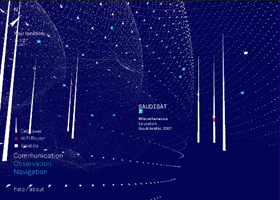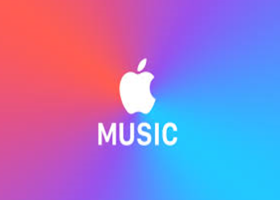Over the years, music rendered to mobile devices and its related technologies made tremendous leaps in advancement to deliver studio quality products and tunes to audiophiles worldwide. The developers of the two apps discussed below each offer a brilliant new insight and solution to the two largest hardware and software platforms manufacturers in an effort to improve both the user’s understanding as well as their listening pleasure.
Architecture of Radio aimed at iPhone users is available at $2.99 from the Apple Store. The app provides an extremely enlightening tool whereby users can visualise a graphical rendition of their digital communications network surrounding them in an artistic, yet simple to use interface. The current version does not feature any form of functionality to improve reception or connectivity, it simply provides a means of better understanding of emissions from satellites, cellular towers, as well as Wi-Fi routers around them.

Architecture of Radio is a beautiful, fascinating iPhone app that reveals the landscape advancing technology surrounding the user that turns their Smartphones into a window illustrating the user’s normally invisible Infosphere surrounding them. The app visualises the normally invisible network emitted by routers, cellular reception towers, observation, and navigation satellites that has become essential for the effective operation of any current day smart mobile devices. The app does not serve as a detection tool for radio wave emissions, it simply utilises a database containing map locations of all pertinent devices relative to the user’s mobile device location at the time.
Consequently it cannot assist you in connecting or improving connections, but it serves as a rather ingenious educational tool to improve the visualisation and introduction of the unseen world to the uninitiated, helping them to improve the understanding of the global communications grid.
The Architecture of Radio is unique in comparison to any other app, its imaginative concept proves to be quite similar to the augmented reality world that overlays a number of datasets and other pertinent content over the top of maps, camera feeds, and other virtual renditions of the physical world.

Apple Music became available as a 90 day free trial on Google’s Play Store where after the ad free version becomes a necessary requirement at $9.99 allowing distribution of the great majority of Apple’s iTunes song library to Android users worldwide, delivering Apple’s Beats 1 radio station as well as numerous exclusive albums. Early reports made the developers aware of a number of dissatisfied clients complaining of the app’s annoying installation and bugginess; additional reviews reported the absence of a number of major song titles, and requested duration to be more specialised, while also complaining of its sub-par social media features.
Apple Music delivers a performance similar to that found on iOS via its newfound Android platformed app, but lost something in translation from its Apple ecosystem origins, which considering its origins issued to be fixed very soon. Despite the early reports, the app still remains quite worthwhile due to the newfound depth and range of content delivers to Android users.
